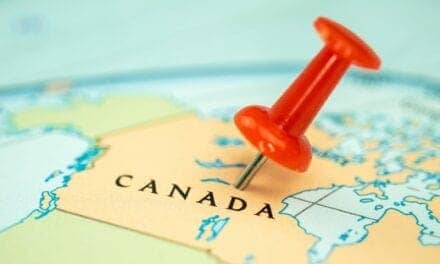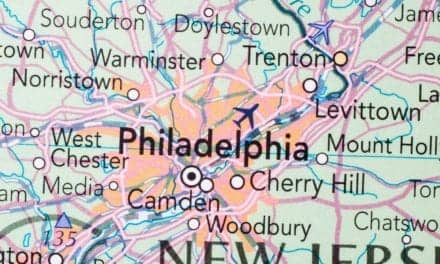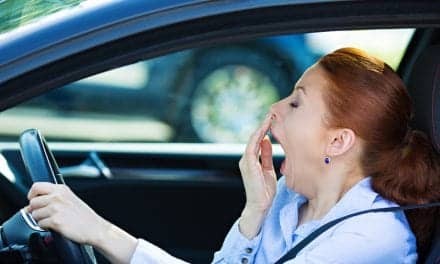During the coronavirus pandemic, sleep professionals decide what procedures occur now and which are postponed, using general guidance from government agencies and professional associations.
By Greg Thompson
In the ever-changing COVID-19 crisis, professional associations and government agencies have stayed away from rigid definitions of what constitutes “essential” services, while at the same time recommending or mandating that nonessential and elective services must be postponed. Many people assume that “elective” means optional; while “elective” does include optional procedures, it also includes necessary procedures that can be scheduled in advance (versus “urgent” services, such as appendectomies, and “emergency” services, such as controlling life-threatening bleeding). For sleep medicine clinicians, guidelines have taken the form of strong recommendations that leave room for clinical judgement based on the particulars of each situation.
The Centers for Medicare & Medicaid Services (CMS) “did not provide a strict definition of ‘non-essential’ care, allowing clinicians to analyze the risks and benefits of any planned procedure,” says Kelly Carden, MD, MBA, president of the American Academy of Sleep Medicine (AASM). “However, CMS did provide several factors that should be considered, including the health and age of the patient and the urgency of the procedure. For sleep medicine clinicians, our priority should be to delay non-urgent care, which is care that can be safely postponed during the current acceleration of this pandemic.” (CMS did not respond to an interview request for this article.)
According to Carden, the AASM “strongly urges” sleep clinicians to evaluate their sleep care services and make decisions about nonessential and non-urgent procedures. “Sleep care is essential to health, but the timing and delivery of this care need to be specific to each patient,” she says. “The pressing question due to COVID-19 is whether sleep care is urgently needed during a public health emergency.”
For Carden, the main consideration is whether current public health risks outweigh the immediate benefits to patients. “Many in-person clinical sleep care services, such as PAP set-up and follow-up visits, can be conducted using telemedicine during this time of crisis,” says Carden, a sleep medicine physician with Nashville-based Saint Thomas Medical Partners – Sleep Specialists. “Some of this remote clinical care, such as CBT [cognitive behavioral therapy] for insomnia, is needed even more as people struggle to sleep well during this crisis.
“For many patients who need in-lab polysomnography or PAP titration, their sleep studies can be delayed without placing their immediate health, safety, or well-being at risk. This decision depends on both the expertise of the clinician and the individual needs of patients. There is no substitute for the medical judgment of a sleep clinician.”
Guidance issued by AASM emphasizes mitigation strategies from the Centers of Disease Control and Prevention (CDC). Clinicians such as Florida-based Kristina Weaver, EMPT-P, RPSGT, considered advice from AASM and the CDC as she and her team pondered PAP titrations with hydrophobic bacteria filters, as well as diagnostic studies. “We ended up cancelling it all after further discussion,” says Weaver, who serves as director of Care Navigation for the sleep navigator/educator program at Parrish Healthcare Center, Titusville, Fla.
While Weaver’s team made the difficult decision to “cancel it all” for the time being, others have also reflected on the “essential” question and come to a different conclusion. For example, the list of essential services supplied by Arizona’s Office of the Governor states that healthcare and public health operations “shall be construed broadly to avoid any impacts to the delivery of healthcare, broadly defined.”
Based on this list, Gerald Fougner, RPSGT, director of Technical Services at Valley Sleep Center, Mesa, Ariz, says,“We are still operating. We tend to follow state guidance because it would be more specific, or less specific, depending on circumstances. For example, in our state, if we had higher infection rates, and the state imposed stricter precautions than the CDC recommended, we would have to follow because we are licensed by the state.”
Dentists who provide oral appliances for obstructive sleep apnea (OSA) are also navigating whether sleep therapy is “essential.”
“Dentists provide oral appliance therapy to treat OSA and rely on referrals from physicians. Some of these physicians are using home sleep apnea tests and telemedicine to safely perform the necessary diagnostic tests,” says Nancy Addy, DDS, president of the American Academy of Dental Sleep Medicine (AADSM). “The test results along with other health issues generally influence the urgency and subsequent recommendations from the physician.
“The AADSM has advised our members that the decision to treat a patient during this pandemic is between the physician, dentist, and the patient and must be made on a case-by-case basis. Both the dentist and patient must assess and completely understand the potential risks and associated consequences and agree to accept both before providing oral appliance therapy. There is not a one-size-fits-all approach to managing care during this time. We are keenly aware that every region of the country is different and how referring physicians are practicing continues to evolve. We have always trusted our members to make the right decisions, and we need to continue to do so with the recognition that what is right is often different for each part of the country, dentist, and patient.
“According to the AASM, OSA is considered a potentially life-threatening disease. If it is life-threatening and a physician feels the patient needs oral appliance therapy to treat it, dentists are ready to work with the patient and the referring physician.
“Our initial focus during this pandemic has been working with existing patients who require an adjustment in their appliance or a fix to a broken appliance. We are finding ways to use telehealth resources to meet the needs of many of our patients. We see telehealth as something that many dentists are embracing now and will continue to do so after this crisis is over.”
On May 19, the California Dental Association (CDA) requested from California Governor Gavin Newsom’s administration “clear, unambiguous guidance for oral health providers and their teams during the COVID-19 crisis.” But it does not appear it received a response. In subsequent guidance to its members, the CDA strongly recommended “that dentists practicing in California suspend all in-person dental care with the exception of emergency treatment, until further notice.”
Rosemarie Rohatgi, DMD, owner of San Diego Sleep Therapy in San Diego, Calif, is still open and offering telemedicine visits. “I believe sleep medicine is essential, particularly when treating severe obstructive sleep apneics,” she says. “It’s important to make sure these patients are treated to maximum medical improvement and to complete treatment therapy. If a patient is suspected or confirmed to have COVID-19, AASM suggests assessing risks and benefits of continuing to use a PAP (CPAP/BPAP) device at home. Persons at risk for infection from using PAP include cohabitants of the same dwelling. In these cases, an oral appliance is an effective solution for patients.”
Viewed outside of the prism of organizational guidelines, the “essential” question of sleep’s value is all but a given. Sonia Ancoli-Israel, PhD, professor emeritus of Psychiatry, University of California, San Diego, put it this way: “Sleep is healing. It helps ward off illnesses and it helps us get over illnesses. So, in this time of COVID-19, when so many people are quarantined and perhaps anxious, it is more important now than ever to get adequate sleep. Since so many of us are working from home, this is the perfect time to throw away the alarm clock and listen to your body. Go to sleep when you are sleepy at night, whether it is at 9:00 pm or 1:00 am, and sleep until your body wakes you up.”
Greg Thompson is a Loveland, Colo-based freelance writer.






Regardless of the prospect of loss of business, EVERYONE is advised(regardless of State) to STAY HOME. If your State has been less impacted by the virus, applaud yourself, then STAY HOME>